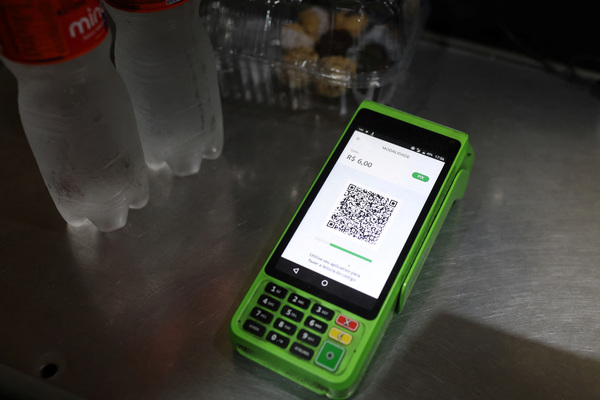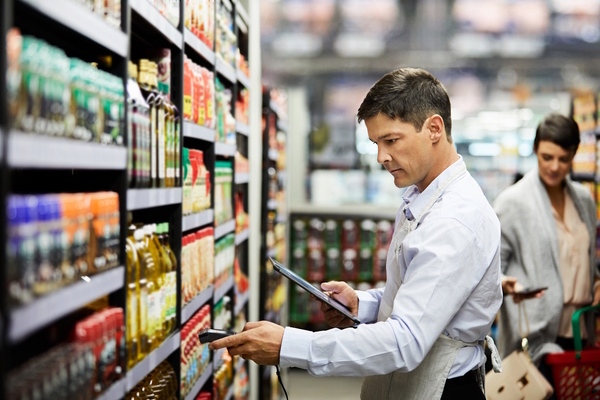2022, where omnichannel meets omnipresence
Melissa Minkow at CI&T how retailers who deliver omnipresent services will capture consumer preference

An omnichannel offering is the new table stakes in retail, with the vast majority of consumers now receptive to and comfortable with online shopping. But with severe supply chain challenges, inflation, and labour shortages causing friction along the path to purchase, consumers want to shop at the most accommodating retailers only.
This means getting what they need in the most convenient way. It also means feeling valued by retailers – and rewarded for their loyalty to the brand.
That’s why the new omnichannel strategy for retailers is now about real omnipresence. In other words, how retailers can make themselves present everywhere to meet consumers’ needs and wants at any time - whether that’s direct-to-consumer (DTC), or across third-party platforms.
How will retailers manage this exactly? Here are four ways in which retailers can prioritise customer convenience.
1. Becoming one giant store
Retailers need to be increasingly open to the idea of being a part of one giant store – whether that’s brick and mortar, or ecommerce. This doesn’t just refer to these two umbrellas operating together. Consumers now expect access to retailers in more ways.
The best way to deliver on this expectation is to embrace partnerships and marketplace arrangements that align with the brand’s values and positioning.
This requires a fearless attitude regarding cannibalization. In the UK, we’re already seeing this manifest in the form of new online marketplaces being launched by retailers like Debenhams and John Lewis. Marks & Spencer has also recently added third party fashion brands as a way of “turbocharging” growth and appealing to a wider customer base.
Inserting themselves into new environments, and increasingly being seen as working together rather than against each other, are key ways retailers can stay ahead of the ever-increasing demands of ecommerce.
2. Accommodating consumers’ first choice
Our recent research found that 41% of consumers prefer shopping via retailers’ apps and 35% on their mobile sites. This acknowledged preference for retailer apps signals a major shift in consumer behaviour and can be recognised as a win for retailers as they have been fighting to take up space on consumers’ home screens.
Consumers showing a readiness to meet them there signifies a notable retail moment, and retailers must continue to focus their presence in this space.
For consumers, using retailer apps has its advantages. Being offered personalised, exclusive, in app-only deals make the shopping experience that much more exciting and enjoyable, leaving the consumers coming back for more.
Their usage also allows retailers to keep track of their browsing history and use this data to enhance consumers’ shopping experience even further the next time they interact with the brand. This is key to locking in customer loyalty as their needs continue to be met each time. Retailers that get this right will benefit from being consumers’ first choice.
3. Building loyalty through exclusivity
Accommodating the needs of different customer bases requires knowledge and understanding of their preferences. This can only be obtained by collecting data, and lots of it. Data is the new currency in retail and it’s just as valuable as the cash consumers are spending, given its rich insights into customer behaviour.
With this in mind, brands need to look for innovative ways to incentivise consumers to share as much personal, relevant information as possible.
One way for retailers to encourage shoppers to ‘opt in’ to data sharing is by offering exclusive perks in return for data on how often they shop there, their preferred brands within the retailer, and even colour palette preferences.
The more information the customer is willing to provide, the more access they’d have to different things – for example, customised web pages, different promotion schemes compared to others, or quicker delivery.
Data is fast becoming the holy grail as it’s increasingly being regulated, so the less available it is to retailers, the more they need to find creative ways to get it from consumers.
4: Using the power of personalisation
Knowing consumers’ unique preferences and needs allows the retailer to go a step further to truly accommodate customers via personalisation. Retailers must work to fine-tune the connection between their omnichannel offerings so that each customer feels the whole path to purchase was designed for that precise journey.
Highly personalised customer experiences today mean providing all the options possible to keep it convenient. Crucial to this, but a point often overlooked, is the need to provide one to one customer service.
Creating direct lines of communication between brands and consumers to ask questions, resolve issues, and receive suggestions regarding the specific products and services they’re looking into for their individual needs is a crucial part of personalising the journey.
For example, if email is the chosen direct line of communication, brands must ensure responses are rapid and directly address the customer’s query. If it’s texting or WhatsApp, brands should keep correspondence to inquiries and recommendations that are initiated by the customer, rather than using their number to mass blast offers.
Appealing to the consumer doesn’t always need to be innovative or complicated - the most memorable retail experiences usually come from those that are the most straightforward.
Convenience rules
Consumers value convenience most when it comes to shopping. Any retail experience that integrates naturally within their lifestyles, requiring the least effort to get what they want quickly, is what consumers will favour.
That’s why true omnipresence is key. Retailers must insert themselves into as many environments as possible and strive to offer consumers a connected retail experience where all these platforms and channel data speak to each other.
This will ensure the most frictionless purchase path and convenient shopping process – whether it’s via a marketplace, an app, or by offering highly personalised customer experiences.
By doing so, retailers are providing all the options possible to accommodate customers, increasing the likelihood of them coming back for more.
Melissa Minkow is Director, Retail Strategy at CI&T

Business Reporter Team
Most Viewed
Winston House, 3rd Floor, Units 306-309, 2-4 Dollis Park, London, N3 1HF
23-29 Hendon Lane, London, N3 1RT
020 8349 4363
© 2025, Lyonsdown Limited. Business Reporter® is a registered trademark of Lyonsdown Ltd. VAT registration number: 830519543





